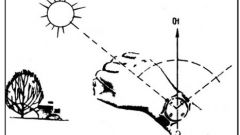Instruction
1
First, if the wires correctly labeled, to distinguish "phase" from "zero" of the big work will not make. Phase wire should be black and brown, the "zero" in blue, and the ground wire is yellow-green. As a rule, monochrome wiring the ends of the wires are equipped with special insulation tubes – cambricum that have a corresponding color.
2
If the transaction is not marked, then to help to understand will help a voltmeter, configured to the appropriate voltage. When measuring the voltage between the "zero" wire with the ground wire the meter pointer will remain motionless. But with the appropriate measurement between phase conductor and "zero", and also when measuring the voltage between phase wire and ground wire, the meter will show the potential difference. Moreover, a large difference will be the measurements with the ground wire.
3
If there is no voltmeter to distinguish the phase wire you can use a regular flat screwdriver. Upon contact with the phase conductor, the indicator lamp will light up. When in contact with other wires, the bulb will not burn. But the lack of methods of using the flat screwdriver in the fact that with its help it is impossible to determine which wire is ground, and what "zero".
4
There is also a method of determining the phase wires without the aid of special devices. But this method has high risk and you can use it only in the most extreme cases. For this, previously de-energized wire, you must insert a fresh cut potatoes at some distance from each other, avoiding the possibility of short circuit. After a little period of time – one or two seconds, the wire is energized. A plot of potatoes near the phase wire will turn blue.
Note
Trying to determine which wire is phase and which "zero" is extremely dangerous. For any electrical work you need to contact the experts.
Useful advice
Flat screwdriver, a simple device that allows to distinguish the phase wire from the rest. It is a must for the Toolbox of every DIY enthusiast.



